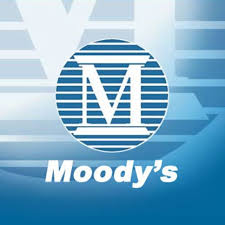Two Moody’s Reports: 2015 Michigan Schools and 2016 Charter School Ratings Criteria


In this post, I offer two documents published by Moody’s Investors Service for perusal of any readers who wish to view them.
The first is a 16-page, November 2015 report on the credit weaknesses in numerous Michigan school districts:
I will highlight only one section of the above report; the section is entitled, “Competition from Schools of Choice Benefits Some Districts at the Expense of Others.” Two issues caught my attention. The first is that the article includes stats from the Mackinac Center, which I wrote about in this March 2016 post, and which has pushed for emergency managers in Michigan and is funded by the Dick and Betsy DeVos Foundation. The second is the final statement of the excerpt about school choice not being “a reliable option” for “maintaining revenue” in struggling school districts:
Competition from Schools of Choice Benefits Some Districts at the Expense of OthersSince its inception in 1996, the state’s Schools of Choice program has provided students with significant flexibility in deciding whether to attend their home district or another. The state has promoted district participation with some funding incentives in the past, though the number of seats available for out-of-district students is at each district’s discretion. The number of students opting for schools outside of the district in which they reside through Schools of Choice has risen on an annual basis over the last decade. Total participation in the program now exceeds 100,000, nearly 8% of total Michigan students enrolled in traditional publicly funded schools. According to a 2013 research study conducted by the Mackinac Center for Public Policy, students in rural districts (9.7%) were more likely to participate in Schools of Choice, than students in suburbs (8.0%), towns (6.7%) or cities (2.8%). Reasons why students in rural districts participate in a higher rate include, closer proximity to neighboring districts in expansive districts or greater programming offerings, while city students are more likely to have access to charters. The relatively high participation rates in Schools of Choice has been cited as an argument for increased consolidation among Michigan traditional school districts. Given the lack of revenue-raising options for individual districts, participation in the program provides a district with an opportunity to increase, or at least maintain, operating revenue via per-pupil state funding levels. In areas with widespread competition for students, such as tri-county metro Detroit, students are more likely to seek attendance at high-performing districts. High-performing districts are more likely to offer a greater variety of services than those districts cutting service levels as a result of deteriorating finances. As such, Schools of Choice may not be a reliable option for financially struggling districts to improve bolster or maintain revenue.
The second Moody’s report in this post is from August 2016. It is Moody’s 21-page, updated “charter school scorecard,” or the updated criteria by which Moody’s rates charter school credit risk:
An excerpt from the report intro:
The charter schools sector is still young and growing, and as such its credit fundamentals are characterized by multiple speculative elements. GivenTwo Moody’s Reports: 2015 Michigan Schools and 2016 Charter School Ratings Criteria | deutsch29:
